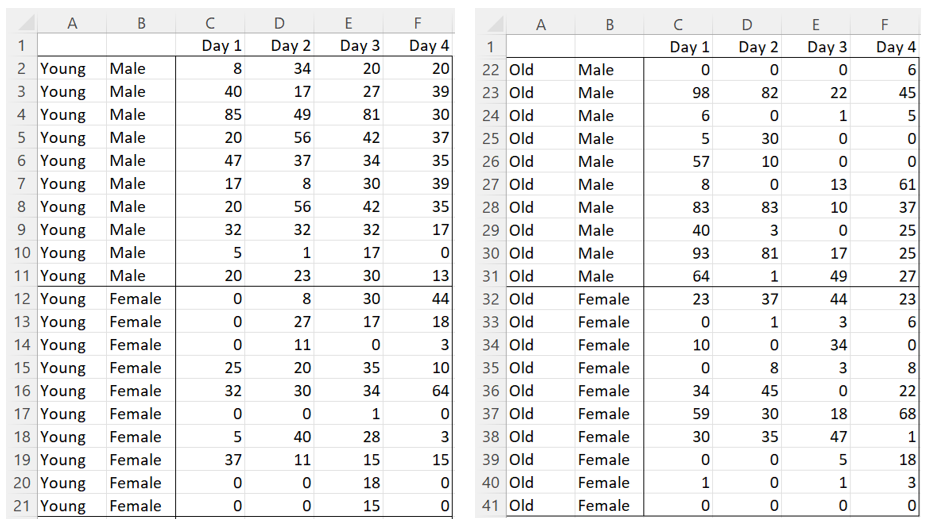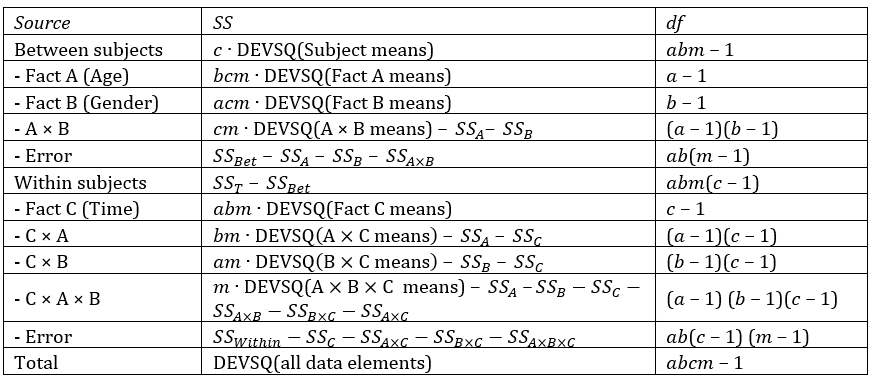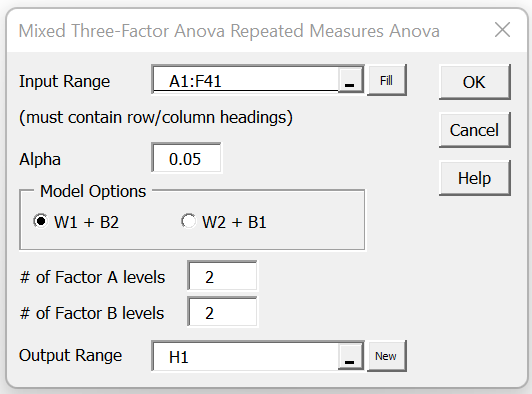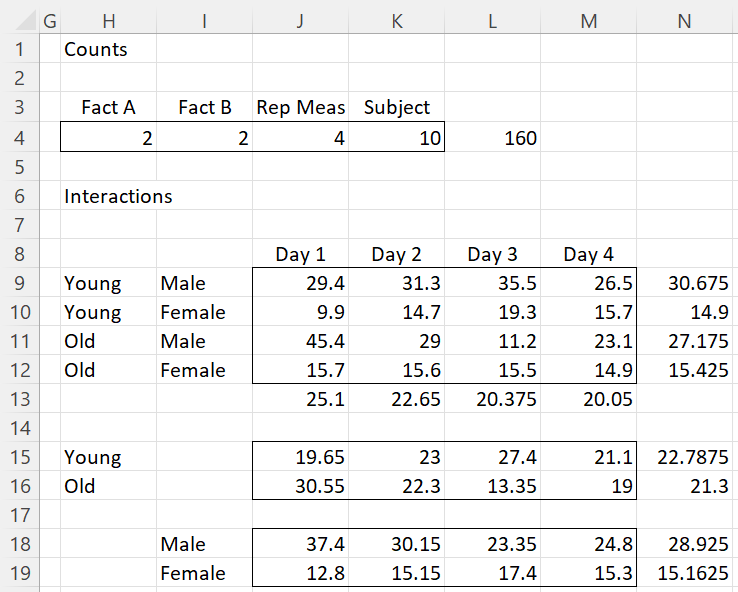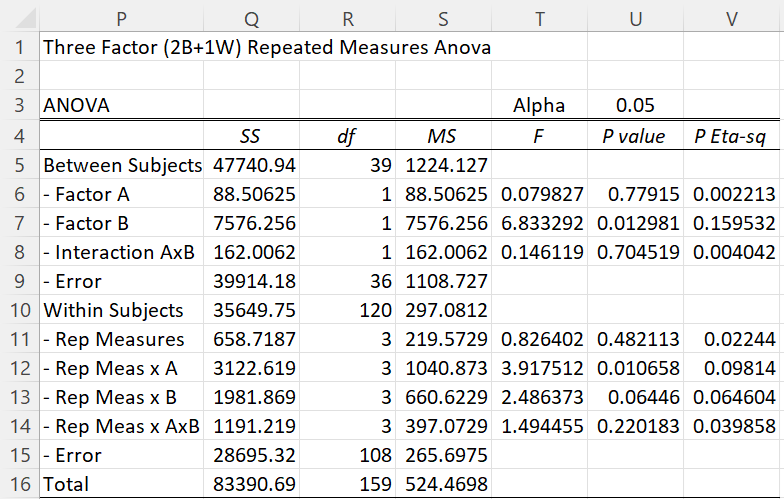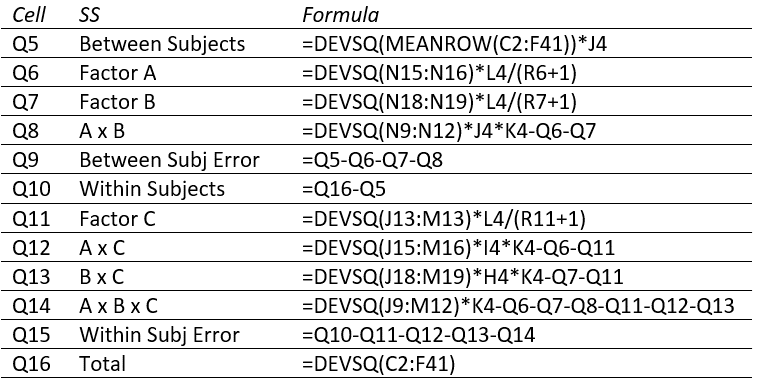Introduction
On this webpage, we will focus on repeated measures ANOVA where there are two between-subjects factors and one within-subjects factor. We will assume that the sphericity assumption has been met and so won’t deal with correction factors. We also won’t explore follow-up testing since these are described extensively elsewhere (click here or here for more details).
Example
Example 1: We consider the situation similar to that in Example 22.8. This time there are two between-subjects factors Age (Young and Old) and Gender (Male and Female) and one between-subjects factor Time (Day1, Day2, Day3, and Day4) based on the data in Figure 1.
Note that the data in range A1:F41 is reformatted in the figure for ease of display.
Figure 1 – Data for Repeated Measures ANOVA 1W+2B
We use the scheme described in Figure 2. Here a = # of Factor A levels, b = # of Factor B levels, c = # of Factor C (within-subjects, i.e. repeated measures factor), and m = # of subjects.
Figure 2 – Sources of Variation
Data Analysis Tool
Real Statistics Data Analysis Tool: The repeated measures ANOVA analysis required for two between-subjects factors and one within-subjects factor can be performed using Real Statistics’ Mixed Three-way Repeated Measures Anova data analysis tool.
For Example 1, press Ctrl-m and click on the Anova tab (or choose the ANOVA option if using the original user interface). Next, choose the Mixed Three-way Repeated Measures Anova option. Fill in the dialog box that appears as shown in Figure 3.
Figure 3 – Mixed Three-way Repeated Measures Anova dialog box
After pressing the OK button, the output shown in Figures 4 and 5 is displayed.
Figure 4 – Repeated Measures ANOVA output (part 1)
Figure 5 – Repeated Measures ANOVA output (part 2)
Representative Formulas
Representative formulas from Figure 4 are shown in Figure 6.
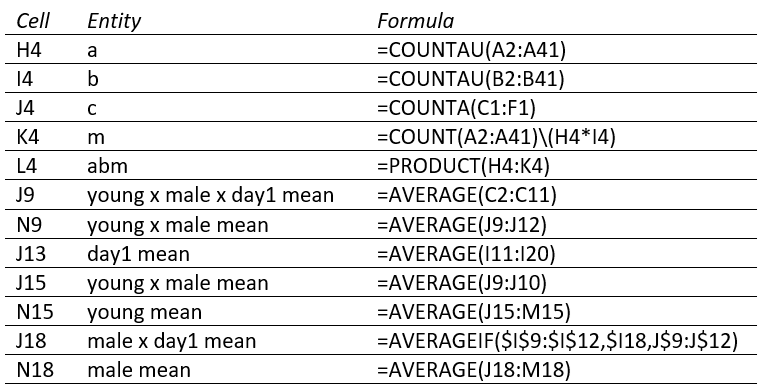
Figure 6 – Formulas from Figure 4
Representative formulas from Figure 5 about degrees of freedom are shown in Figure 7, while those about SS are shown in Figure 8.
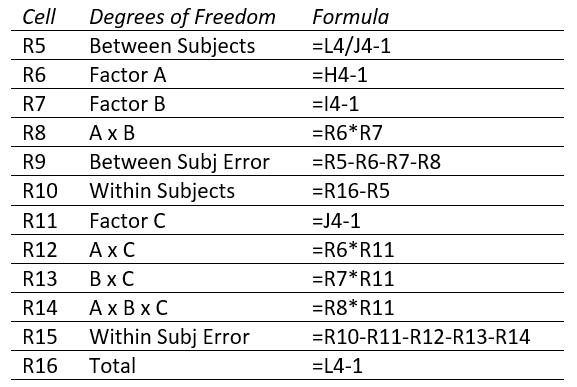
Figure 7 – Df formulas from Figure 5
Figure 8 – SS formulas from Figure 5
References
Howell, D. C. (2010) Statistical methods for psychology (7th ed.). Wadsworth, Cengage Learning.
https://labs.la.utexas.edu/gilden/files/2016/05/Statistics-Text.pdf
Winer, B. J. (1962) Statistical principles in experimental design. McGraw-Hill
https://psycnet.apa.org/record/2008-16855-000
